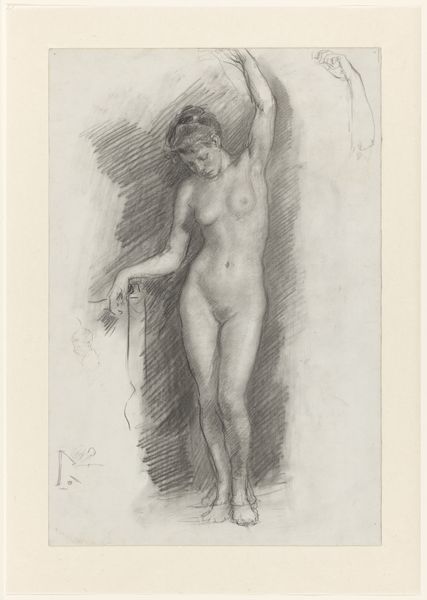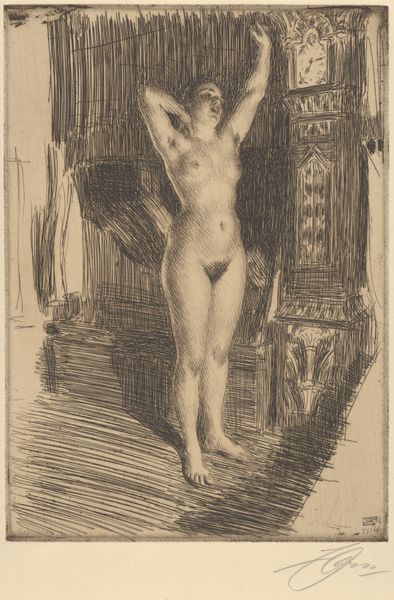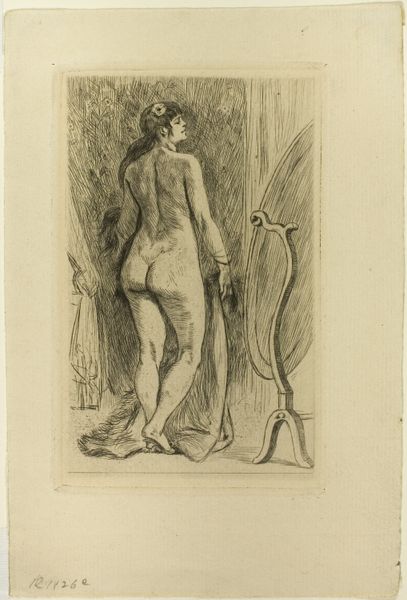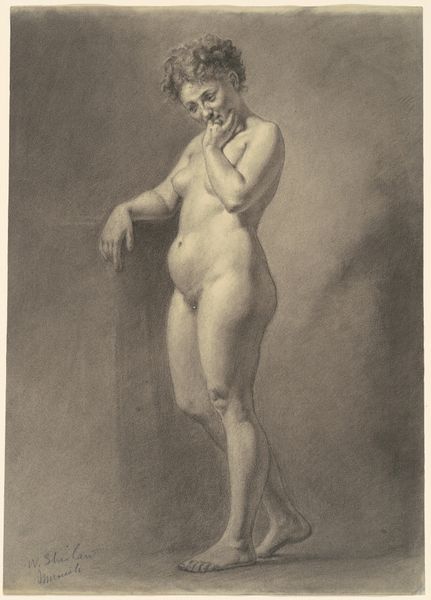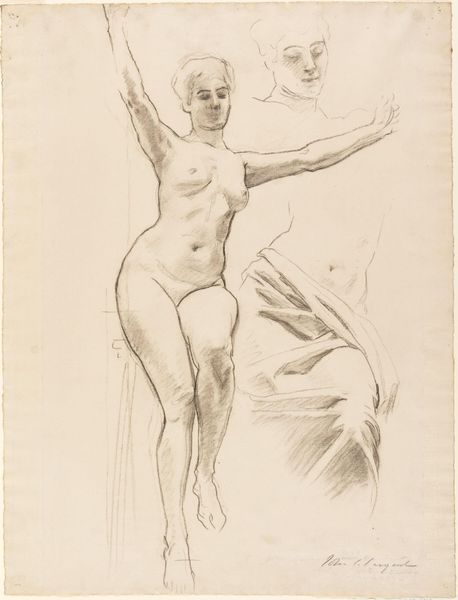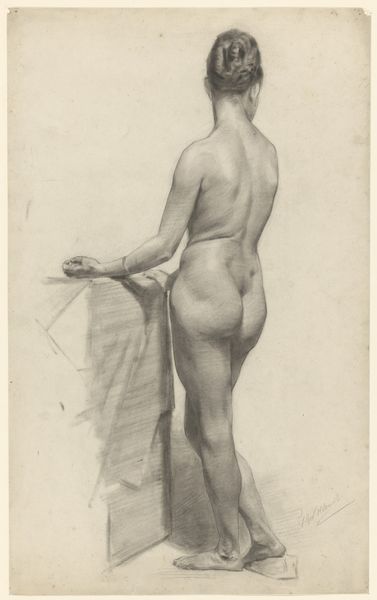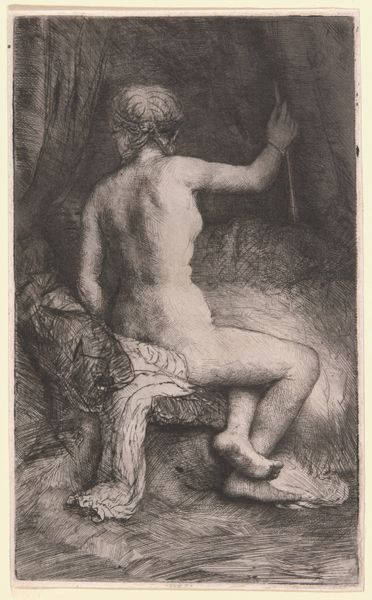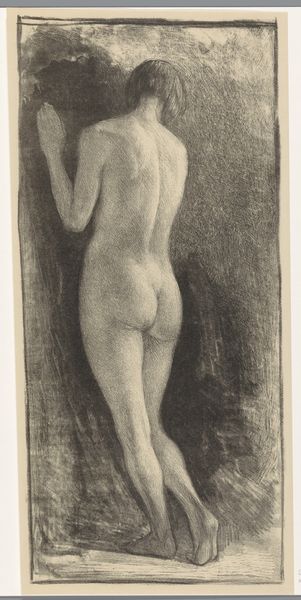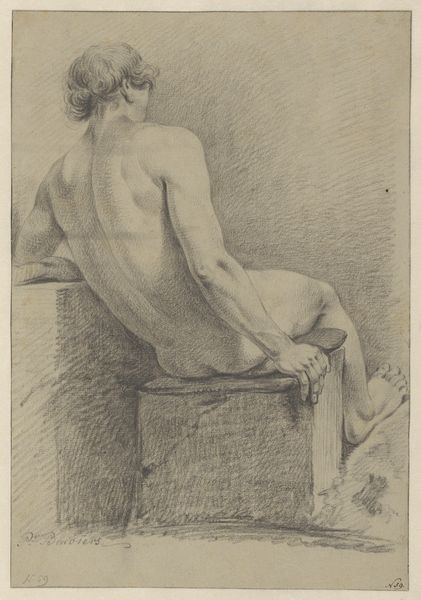
drawing, pencil
#
portrait
#
drawing
#
figuration
#
pencil
#
nude
#
realism
Dimensions: height 321 mm, width 193 mm
Copyright: Rijks Museum: Open Domain
Editor: Here we have "Standing Nude Woman Drying Herself," a pencil drawing by Willem Witsen, made sometime between 1870 and 1923. I’m struck by the intimacy of the scene; it feels almost voyeuristic. What are your thoughts on this work? Curator: It's interesting you use the term 'voyeuristic.' Considering the male gaze prevalent during this period, this piece offers a moment to reflect on how women's bodies were – and continue to be – objectified in art. What do you think this image is trying to say about female identity, given that context? Editor: I guess it’s difficult to say. Is she presented as an object, or is Witsen trying to capture a private moment in a more respectful way? Curator: Precisely! And it opens a space to talk about realism versus idealization, how art intersects with evolving social attitudes. This era witnessed heated debates around women's rights, including agency over their own bodies. Does this work subtly participate in or challenge those conversations? Editor: I see what you mean. It does make you think about the social context surrounding the work. Curator: Exactly. Art isn't created in a vacuum. By understanding the prevailing dialogues around gender, representation, and power, we can more deeply appreciate what artists like Witsen were grappling with. Do you feel that the drawing could spark contemporary conversations about body image or sexuality? Editor: Absolutely. Thinking about how representations of the female form continue to be debated makes me appreciate this drawing more deeply. Curator: And that's where art history meets contemporary theory, offering us new lenses through which to view both the past and present. Editor: This was really insightful. I never thought of viewing it in the context of social commentary about the gaze.
Comments
No comments
Be the first to comment and join the conversation on the ultimate creative platform.
